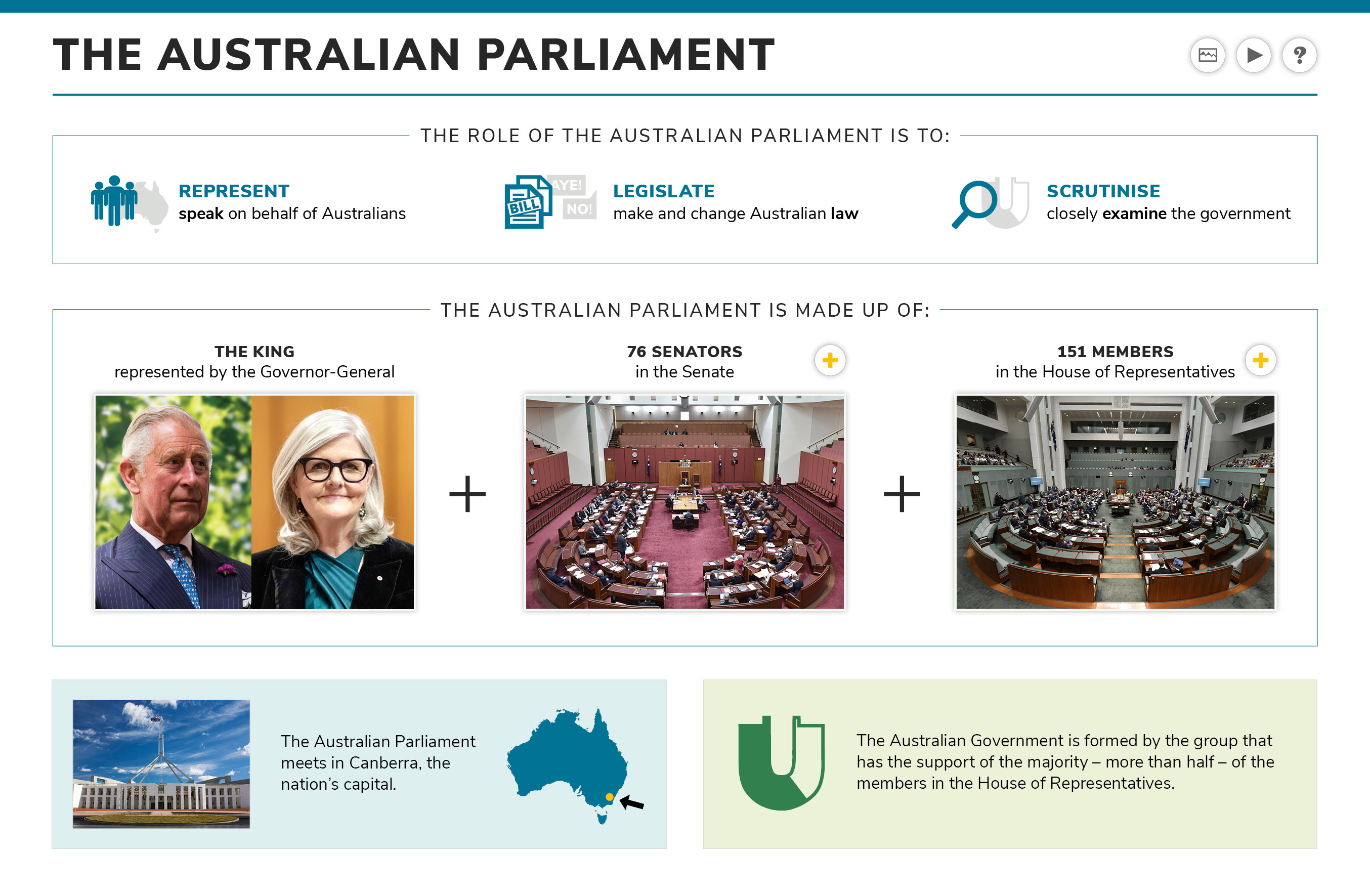The Australian Parliament
Introduce the Australian Parliament, its component parts and its role in your classroom with this interactive poster. Use the teaching notes and activities to support your students' learning.
Teaching notes and activities
Curriculum links
Year 6: ACHASSK143; ACHASSK145
Year 7: ACHCK048
Year 10: ACHCK090
Before you begin
Read the Australian Parliament fact sheet, which explores the structure and key functions of the Australian Parliament. It covers Parliament’s roles of law-making, representing Australians, the formation of government and checking the work of the government.
You could also read the Australia’s Parliament House in focus paper. This in-depth look at Australia’s Parliament House investigates why Canberra was chosen to be the nation’s capital. It includes the design, site and symbolism of Parliament House.
Getting started
These discussion starters are listed from easier to more complex. Choose the ones that work best for your class.
- The King is our head of state and is part of the Australian Parliament. Who else makes up our Parliament?
- What are 3 things the Australian Parliament does?
- The Governor-General represents the King in our Parliament. Who do the members of the Senate and the House of Representatives represent?
- Why do we make laws in Australia?
- Why does Parliament scrutinise – closely examine – the work of the government? What could happen if there was no scrutiny?
- The Australian Parliament is bicameral, which means it has 2 chambers or houses. What do you think might be the advantages and disadvantages of a bicameral system?
Activities
Explore the timeline activity
- In small groups, students visit the Australian Parliament history timeline to find and note down milestones that occurred on the following dates
- 12 June 1902
- 27 March 1912
- 31 July 1924
- 18 June 1962
- 21 March 1973
- Students select the 2 milestones they consider most significant, and explain to the class why they chose these 2 milestones.
Parliament research activity
- Divide the class into small groups. Each group must research the parliament of an Asian country, such as India, Indonesia or Japan.
- Questions to guide group research could include:
- Who is the head of state?
- How many parliamentary houses are there?
- How are members elected?
- Is there a constitution?
- What are the main similarities and differences between their parliament and ours?
- Groups can present their research to the class visually. For example, as a poster, infographic or animation.
Reflection
After looking at the interactive poster and completing some of the activities, discuss this question with your class:
- In 1908 it was decided Canberra would be the location of our nation’s capital and where the Australian Parliament would meet. Why do you think a new city was needed? If we decided to change our national capital, where would you build our Parliament? Why?
